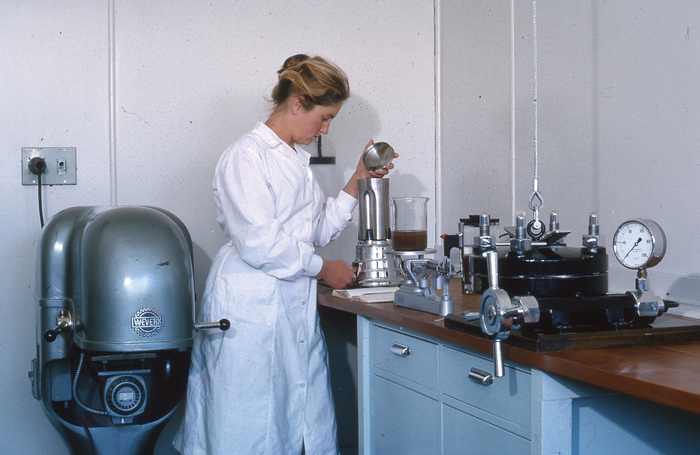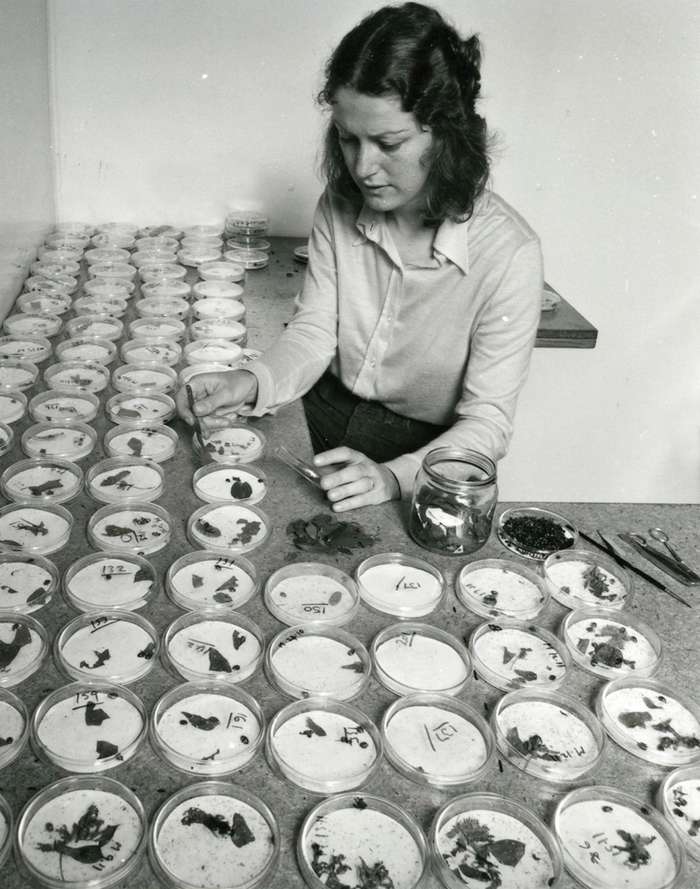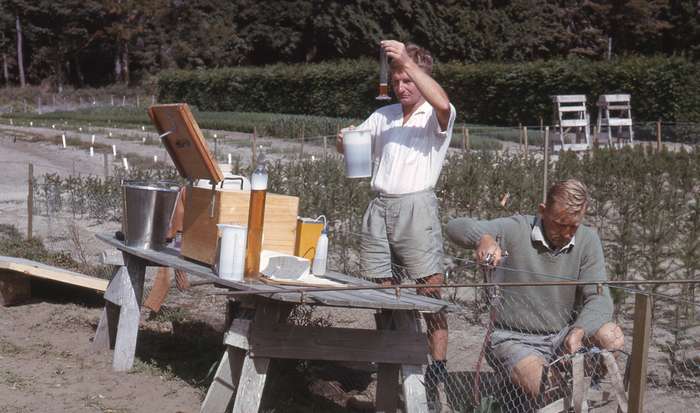Celebrating 75 years of impact

This year, Scion turns 75. Since its inception in 1947, expertise has grown from research to support the development of sustainably managed exotic plantation forests and forest product industries, to a broader view of the role of forests in supporting a circular bioeconomy. This evolution represents the increasing importance of forests, and Scion’s commitment to enhancing New Zealand’s prosperity, wellbeing and environment through trees.
With 332 full-time-equivalent staff in Rotorua, Christchurch and Wellington, our talented people are tackling some of the biggest challenges facing our planet and helping Aotearoa transition to a low-carbon circular bioeconomy.
Scion chief executive Dr Julian Elder says the 75th anniversary is a chance to not only reflect on where we’ve come and where we’re headed, but to make a commitment to acknowledging the place that Scion sits right now – quite literally, the land on which the institute was built.
“When we opened our award-winning innovation hub, Te Whare Nui o Tuteata, in March 2021, we were on a journey of inviting visitors into Te Papa Tipu campus, where Scion is headquartered in Rotorua, and sharing our work with the community.
“A significant and very special part of that journey has been the relationships we have developed with Ngā Hapū e Toru; Ngāti Hurungaterangi; Ngāti Taeotū and Ngāti Te Kahu o Ngāti Whakaue.”
Ngā Hapū e Toru are the mana whenua of the 114 hectare site where Scion is situated in the Te Papa Tipu campus. Ngā Hapū e Toru trustee Veronica
Butterworth explains that when the land was used by the Crown as a forest nursery from 1898 and then for forestry research from 1947 onwards, physical connection of the hapū to this land was severed but the spiritual connection was never lost.
“Land is the basis of identity and wellbeing for our people,” Butterworth says. “We are genealogically connected through our whakapapa to the land itself, as we trace our ancestry from Papatuanuku (the earth mother) and Ranginui (the sky father).
“Our whakapapa ties to the land and the various parts of the natural environment are fundamental aspects of our culture and our lives. Whakapapa and whanaungatanga give rise to obligations to look after the land, the waters and the environment on behalf of our ancestors and ourselves for future generations.”
It is this kaitiakitanga (guardianship) of the land, and the long-term perspective of Māori, that Dr Elder says will guide Scion as we head towards a circular bioeconomy future.
“Right now, we are on the cusp of huge opportunities with the circular bioeconomy. Scion, and New Zealand, are incredibly well-placed to contribute to this – we grow things well, we’re great at the science and, vitally, matauranga Māori and the worldview of Māori has much to teach us about interconnectedness with our environment.”
In July this year, Ngā Hapū e Toru and Scion will sign a Memorandum of Understanding that will recognise the value of working together in the spirit of cooperation and partnership.
Butterworth says,“Looking to the future, our hapū are building a relationship with Scion to reconnect our people and traditions to this land. The name of this campus, Te Papa Tipu – land on which to grow – is appropriate.”
For principal scientist Brian Richardson, celebrating 75 years of Scion is a chance to acknowledge the high-calibre breadth of work that has been achieved over that time.
Dr Richardson has worked at Scion for 39 years across many areas of forest science. In that time, he has seen a lot of changes – and a lot of things come back around. The highlights across the organisation have been many – genetic improvement of radiata pine, overcoming many forest health challenges and biosecurity incursions, supporting development of sustainable forest management practices to ensure maintenance of productivity and license to operate, and creation of management models using data from the permanent sample plot (PSP) database.
“There are certainly too many work programmes for me to name but the impact that Scion’s research has had on New Zealand, across all our teams, has been significant.
“Scion has certainly been a leader across a range of areas. Our work in areas such as ecosystem services – quantifying the benefits of forests beyond the timber – were happening long before the topics were accepted as mainstream activities.”
Looking to what Scion’s future might hold, Dr Richardson looks back at the biomaterials strategy that was developed in 2003.
“That strategy was a brilliant work of foresight and if you look at our strategy today, it’s similar in terms of what we are wanting to achieve. The biomaterial work was formed from really looking at the global trends and issues around sustainability and the need to move to a more circular economy. While it may not have used those exact words, that was the crux of it. But it was really hard to get any traction, as the strategy was ahead of its time.

“Today of course, everyone’s talking about alternative fuels, bioenergy and so on. New Zealand’s future may even include forests grown for biomass and conversations are starting to happen about where these could be.
“Looking to the next 75 years, those issues are not going away. Greenhouse gases driving climate change, fuel costs skyrocketing - all these things are coming to pass so the notion that we need to think more about sustainability and circularity in terms of the economy and plant-based economic growth I think plays beautifully into the hands of an organisation like ours. We’ve been working on these things for many years and we need to just keep pushing ahead.”
Doug Gaunt is a principal researcher in the materials analysis, characterisation and testing team. He joined Scion in 1979 and says the organisation’s contribution to the structural timber sector has been transformational.
Gaunt and his team focus on commercial testing for the timber building sector, supplying customers with the information they need to develop their own products and to meet export standards.
“Scion has been doing this work extensively for 40 or 50 years and I’d like to think that our research and expertise has impacted most building products in New Zealand. That is a huge testament to the work that has been conducted in our timber engineering labs.
“We’ve changed the entire grading system for the structural timber sector by shifting from visual grading to a system that is now fully machine-graded and third-party audited.”
For Gaunt, it’s the impact that Scion has made for New Zealand, and for individuals, that is really special to him.
“Changing the grading system has been a highlight for me. But I also really love working with all our clients and I get a highlight almost every week from working with them. They come in wanting ideas and, thanks to our knowledge, they can leave with a better product.”
Gaunt sees the future for Scion focusing on impact, people and continuing to tell the strong Scion story.
“It would be wonderful to see us connect more – with industry, with our community and with trainees. That’s how I got my start at the then Forest Service. I was a trainee technician and we spent time across different labs getting training. That’s where I fell in love with timber processing and my career grew from there.
“I think we’ll see a lot more timber buildings. Te Whare Nui o Tuteata is a stunning example of what can be done with wood.
“And of course, climate change is coming. We know there’s a changing disease risk, there’s a changing fire risk, there’s a changing wind risk, there’s all those sorts of things factored into our forest estates, because if we don’t have an estate, we haven’t got a forest sector, a processing sector. So keeping the existing forests viable and healthy has got to be a key thing for us to do.
“The New Zealand government is also committed to planting trees as a way to help mitigate the effects of climate change so let’s plant as many trees as we can and if in 30, 40, 50 years our biggest problem in the world is working out what to do with all these trees then I think we’ve had a success.”

